Spring ephemerals: 9 Minnesota wildflowers you can find between snow-melt and leaf-out
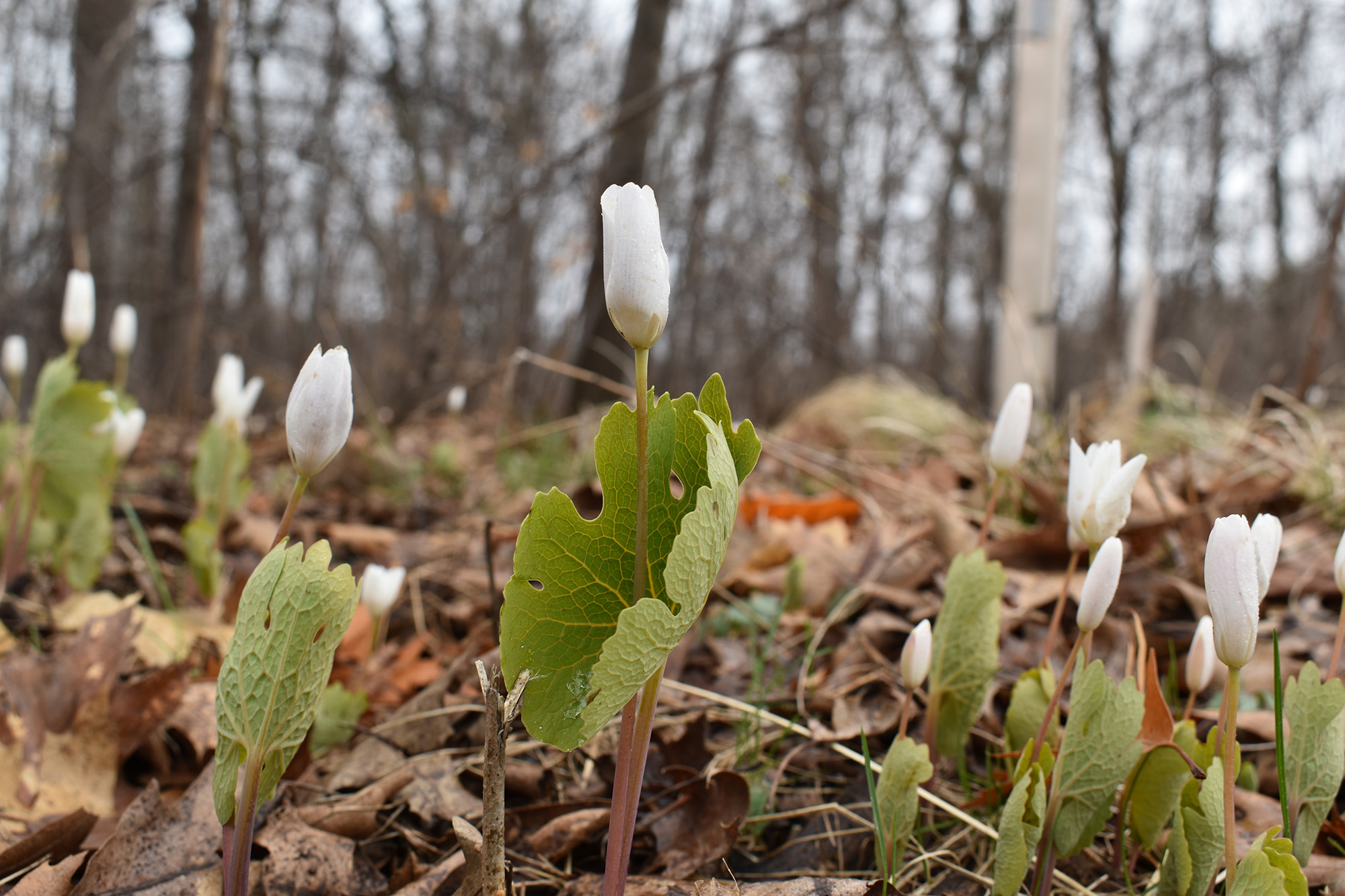
Bloodroot blooms in the river gorge.
Every spring my daughters and I celebrate "leaf-out" when the first hints of green dot the tree branches. Leaf-out means we've made it through winter. Leaf-out also means we're in peak spring ephemeral wildflower season.
A whole guild of woodland wildflowers bursts up through barely thawed soil and the matted layer of last fall's cast-off leaves in early spring. Their green spears bud, bloom and fruit before trees fully unfurl to shade the ground for the rest of the summer.
When it seems the world is mostly still brown and waking between March and May, native spring ephemeral wildflowers manage to live out their whole reproductive life cycle. Look overhead and you might see birds migrating north on the Mississippi River flyway. Look down, closely, in the forest, and you might see these blossoming heralds of the verdant days ahead.
Why are spring ephemeral wildflowers important?
We're not the only ones who appreciate these plants. Pollinators that emerge early from their overwintering sites haven't taken in energy since the fall. But in early spring, there aren't many blooms around. Some bees and other insects have coevolved with these early native wildflowers over thousands of years, relying on their nectar and pollen.
When we lose patches of spring ephemerals to development or degradation, we lose a key food source for pollinators, and a key part of our interconnected ecosystem.
And when we lose spring ephemerals, we might lose them for good. Spring ephemerals are some of the most challenging plants to bring back to the land once they're gone. It takes years for seeds to collect enough energy underground before they can flower, and many of them are notoriously difficult to grow in greenhouses. Our best bet is to work to save those that remain.
In spring, many invasive species sprout and leaf out earlier than native plants. Garlic mustard, for example, begins flowering in April and May — like our spring ephemerals. But this invasive plant doesn't offer the same benefits to insects here, and can quickly spread through large areas of woodlands to form monocultures. So when FMR volunteers hand-pull garlic mustard with care at our restoration sites, they're helping special spring ephemerals like the nine listed below survive.
Thanks to our collective stewardship, you can find patches of these wildflowers in the Minneapolis river gorge, Crosby Farm Park and other FMR habitat project sites.
Nine early-spring woodland wildflowers in Minnesota
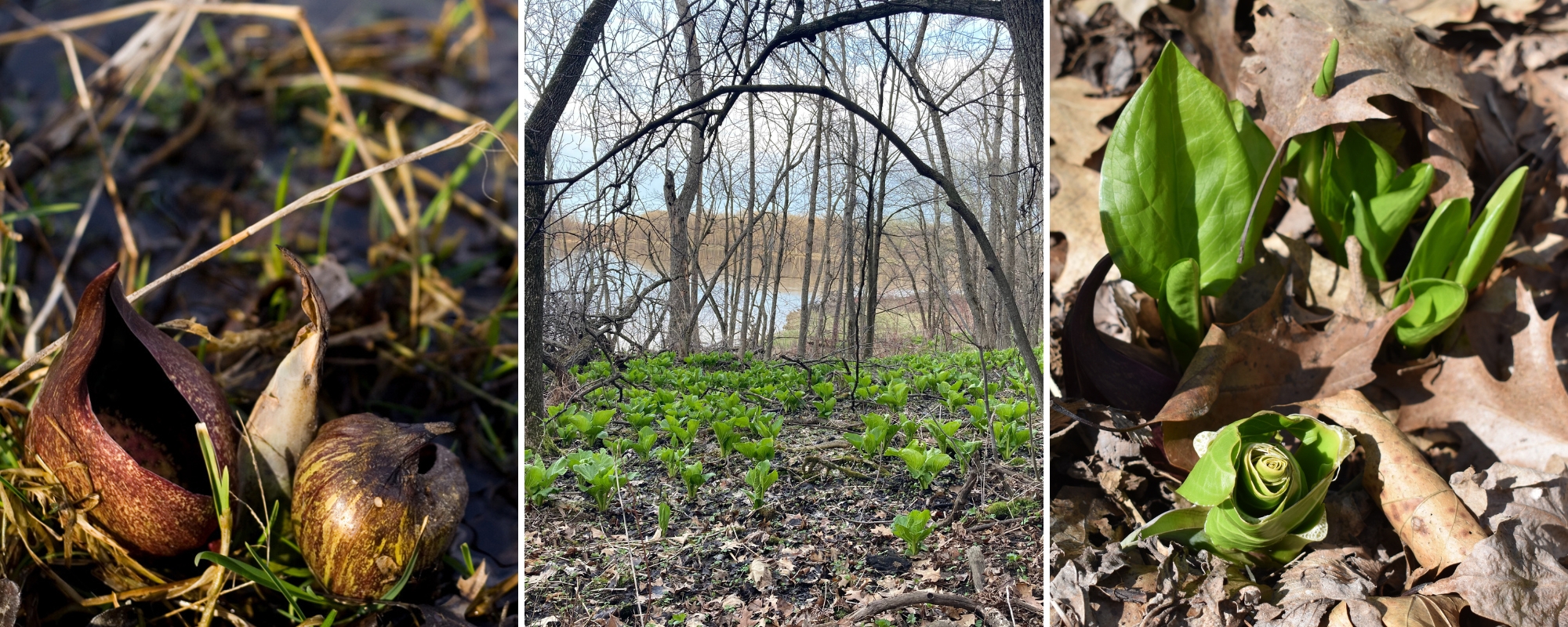
Skunk cabbage (Symplocarpus foetidus) from left to right: red, cup-like spathe (photo by Justin Meissen); field of skunk cabbage in wet soil; cabbage-like leaves
Skunk cabbage
Tips for identification: This plant's name provides two keys: It looks like cabbage and smells skunky. Before its leaves come out, you'll be able to see its distinctive red spathe — a cup-like wrap around the flower.
When to find: Skunk cabbage is one of Minnesota's earliest-blooming flowers. Look for it coming up in mucky areas around February or March.
Wildlife connections: This species can bloom so early because it's one of the few plants capable of producing heat. Its warmth melts nearby snow and keeps the inside of the spathe much warmer than the outside air, offering a valuable spot for pollinators to find shelter even as temperatures dip below freezing.
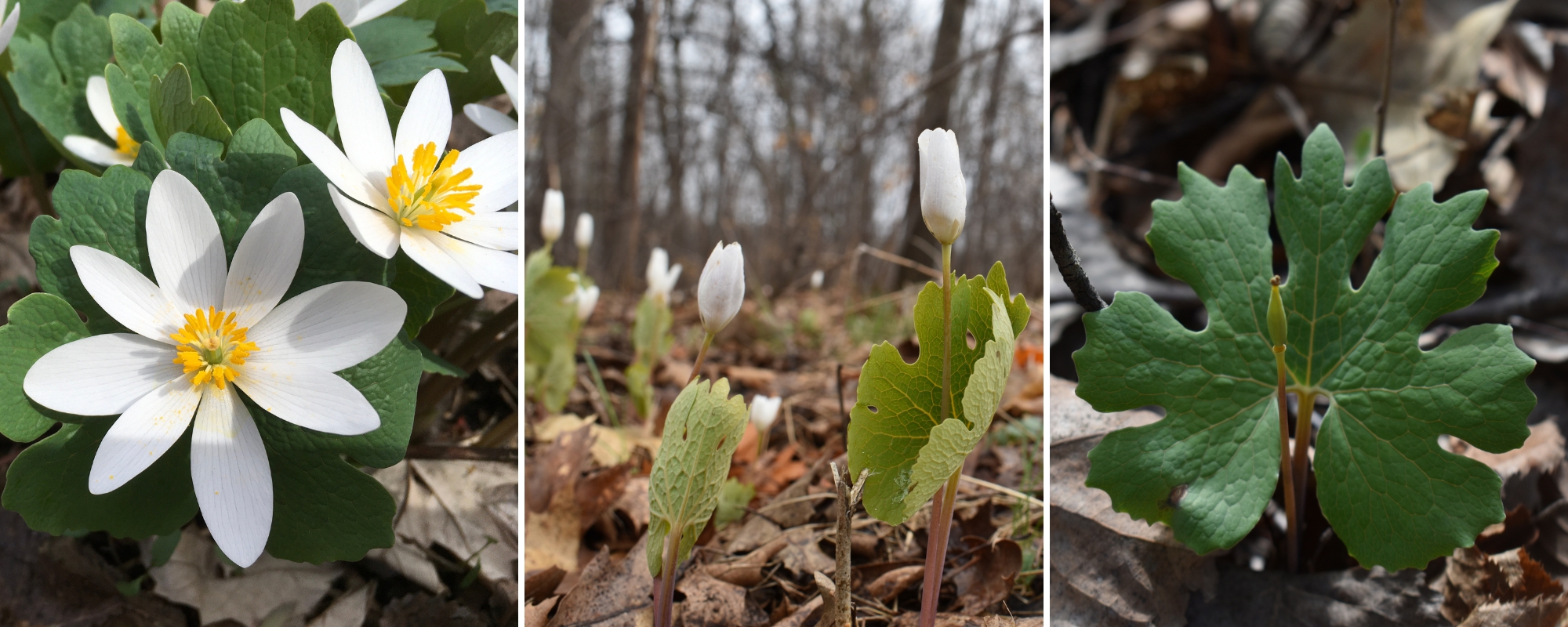
Bloodroot (Sanguinaria canadensis) from left to right: blooms open; closed flowers in the cold; fruit after blossom
Bloodroot
Tips for identification: Each plant has a single, lobed leaf clasped around a stem turned red by the blood-colored sap that flows through its roots and rhizomes.
When to find: The early half of spring ephemeral season, usually March-April
Wildlife connections: Inside the pod that fruits after flowering, bloodroot seeds (like those of other spring ephemerals) are capped with a gooey clear substance called an elaiosome, which is packed with fats and nutrients. Ants carry seeds back to their nests, eating the tasty elaiosome and leaving the seed safe underground.
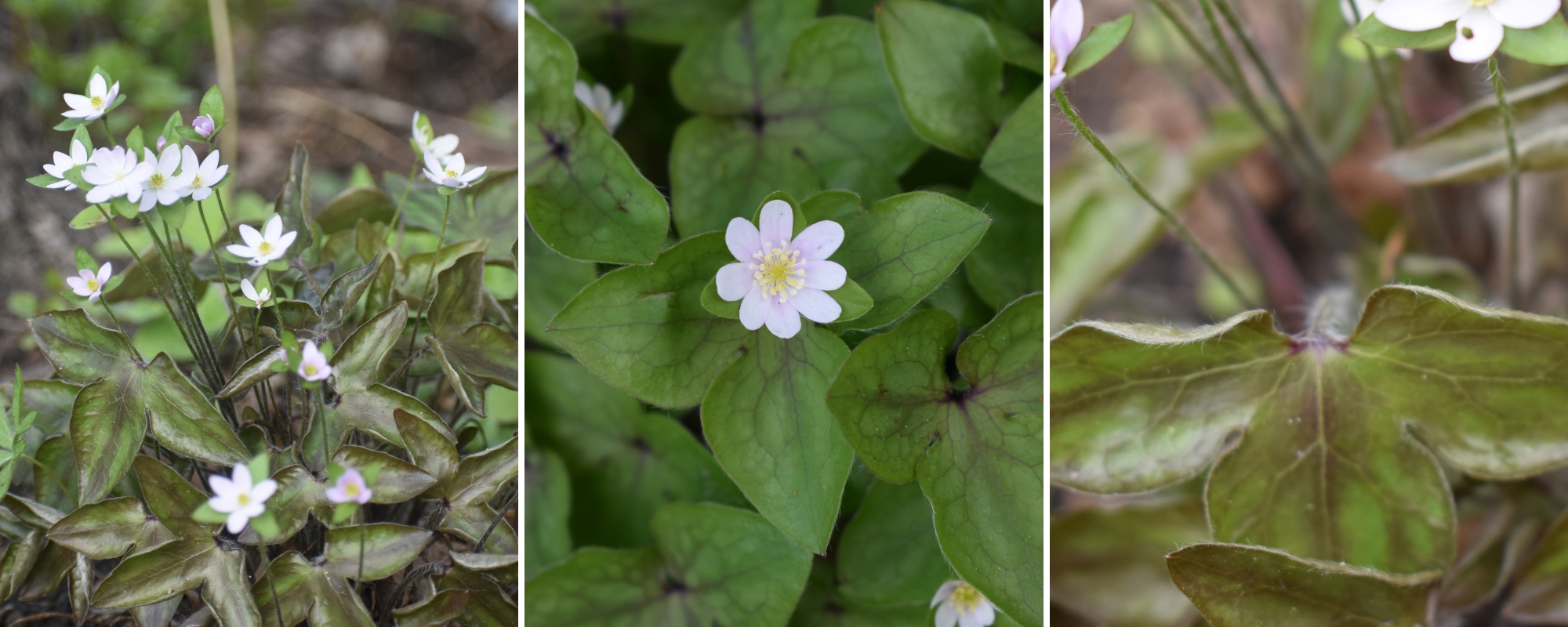
Sharp-lobed hepatica (Hepatica acutiloba) from left to right: clump of flowers; close-up of blossom; fuzzy stem
Sharp-lobed hepatica
Tips for identification: Fuzzy stalks hold up their white to pinkish-violet blooms. The three-lobed, liver-shaped leaves on this plant open after the flower opens, then darken to maroon and remain through winter.
When to find: Early to middle spring ephemeral season, usually April-May
Wildlife connections: These wildflowers actually make no nectar, reserving their energy for making pollen, which carpenter and sweat bees need. Like other spring ephemerals, hepatica will close up its flowers overnight or on a cold day, then unfurl again when pollinators are more likely to be active.
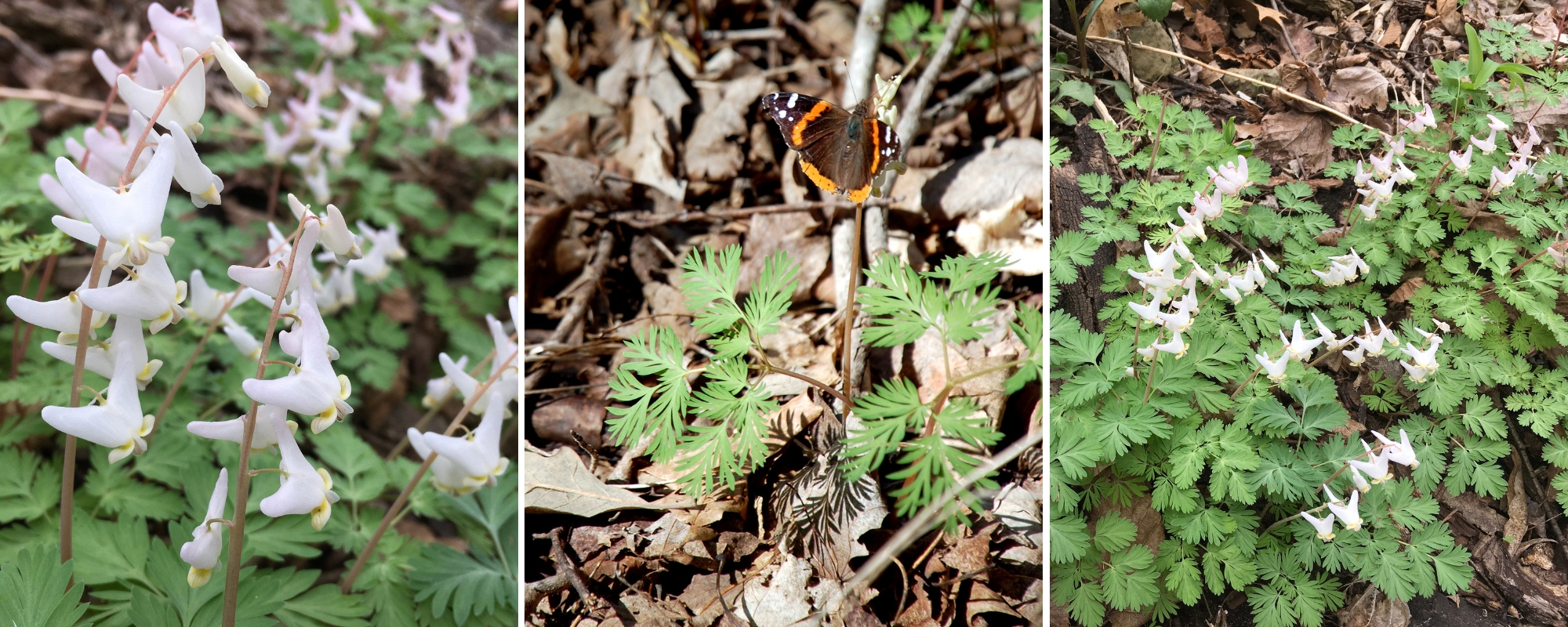
Dutchman's breeches (Dicentra cucullaria) from left to right: flowers; red admiral butterfly perched on the plant (photo by Mary Rogers for FMR); a patch of leaves and blooms
Dutchman's breeches
Tips for identification: Named for flowers that look like tiny pairs of white pants hanging from a laundry line, Dutchman's breeches resemble their popular garden relative, bleeding heart.
When to find: The middle of spring ephemeral season, usually April-May
Wildlife connections: These leaves are actually toxic to mammals, so deer will steer clear. But bees are attracted to the flowers' bright yellow lobes. As bumble bees with long tongues gather nectar stored at the "foot" of the flowers' spurs, pollen brushes their abdomens.

Large-flowered bellwort (Uvularia grandiflora) from left to right: twisted yellow blossom; a clump of bellwort (photos by Rose McLaughlin for FMR)
Large-flowered bellwort
Tips for identification: Swirls of yellow flowers hang down like bells from their relatively tall stems. You won't often find just one — bellwort usually grows in clumps.
When to find: The middle of spring ephemeral season, usually April-May
Wildlife connections: Deer love to eat bellwort. The bellwort seed's elaiosome attracts ants that carry the seed away from its origin and back down into the earth, where it can eventually germinate.
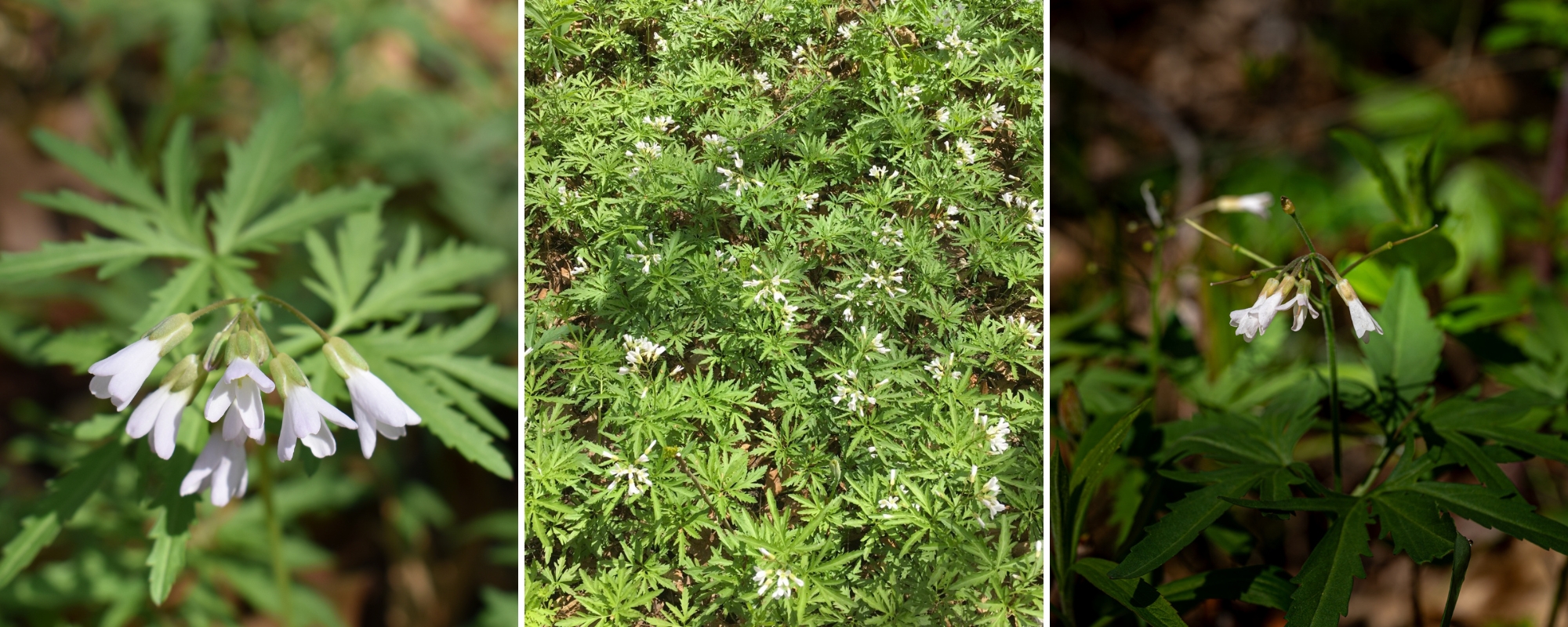
Cutleaf toothwort (Cardamine concatenata) from left to right: blossoms and toothy leaves; carpet of toothwort; seeds and final flowers (photo by David Wheaton for FMR)
Cutleaf toothwort
Tips for identification: If you know what garlic mustard looks like, the toothwort's cross-shaped white flower will look familiar since both plants are in the mustard family. But the toothwort's leaf shape is distinctive, like a hand with five fingers. Its name comes from its jagged leaf edges and toothy rhizome underground.
When to find: The middle of spring ephemeral season, usually April-May
Wildlife connections: Often found in patches, cutleaf toothwort attracts animals, like the white-footed mouse, looking to nibble fresh spring greens. That includes mustard white butterflies, who lay their eggs on toothwort and other mustard plants so when larvae emerge, they have plenty to eat.
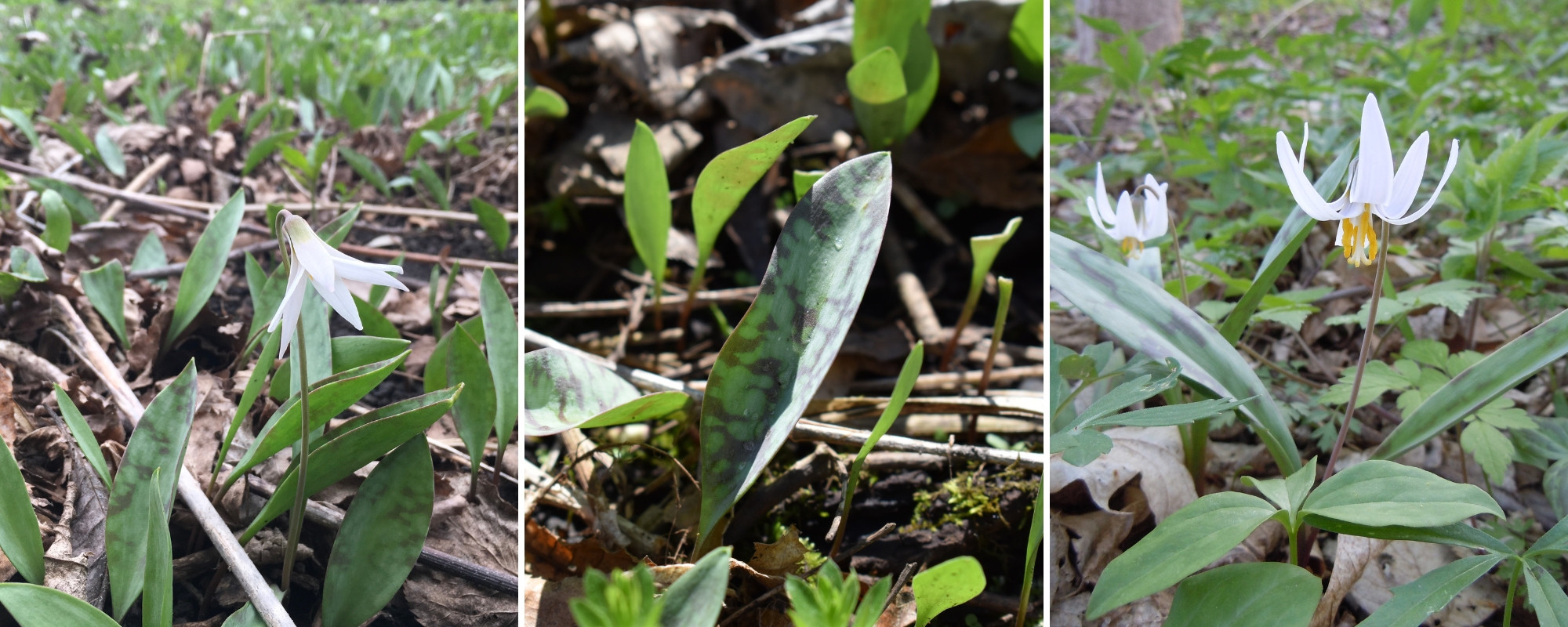
White trout lily (Erythronium albidum) from left to right: flower in patch of trout lily; mottled leaf; flower inverting (photo by Jessica Bolser/USFWS)
White trout lily
Tips for identification: Trout lily often grows in colonies across the forest floor. Its dappled green leaves look like a trout's mottled coloring or patches of sun and shadow in the woods.
When to find: The middle of spring ephemeral season, usually April-May
Wildlife connections: Butterflies, skippers, flies and various bees all visit trout lilies for early-season nectar and pollen. One mining bee, the trout lily andrena, is even named for its close association with the plant.

Jack-in-the-pulpit (Arisaema triphyllum) from left to right: early growth; the pulpit-like spathe (photo by Allan Tokuda for FMR); large leaves
Jack-in-the-pulpit
Tips for identification: When fully grown, a maroon and green pulpit-like cup (or spadix) folds over a green spathe beneath one or two big, three-lobed leaves.
When to find: The later half of spring ephemeral season, usually April-May
Wildlife connections: Jack-in-the-pulpit smells a little like fungus to attract its pollinator, fungus gnats. Thrushes and other birds and mammals eat the red fruit clusters.
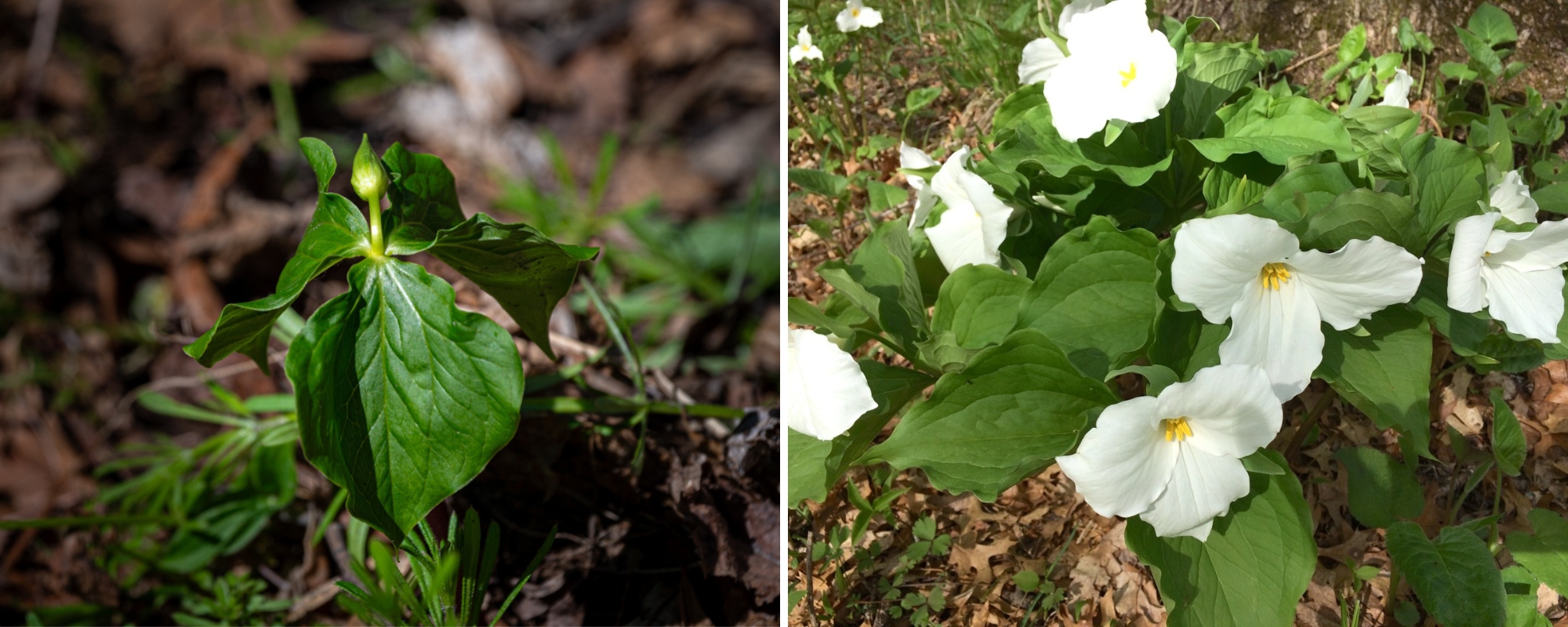
Large-flowered trillium (Trillium grandiflorum) from left to right: bud with leaves (photo by David Wheaton for FMR); open blossoms
Large-flowered trillium
Tips for identification: We have a few native species of trillium in Minnesota. They all have three petals, three green sepals around those petals, and three big leaves.
When to find: The later half of spring ephemeral season, usually May
Wildlife connections: Some believe that the large-flowered trillium's white petals turn pink after pollination, signaling the job done to pollinators. But most research shows that petals turn pink with age regardless. Still, the trillium is an important source of pollen for early-season bees.
How you can help spring ephemerals thrive
In fleeting early spring, when you see these beauties in the forest, treat them with care — don't pick them or walk through them. Join us as a volunteer to actively support them by hand-pulling invasive species at our woodland restoration sites. You can also create microhabitat in your yard by planting spring ephemerals in shady spots. Just make sure to buy from ethical native plant vendors — never dig them up or collect seed from the wild.